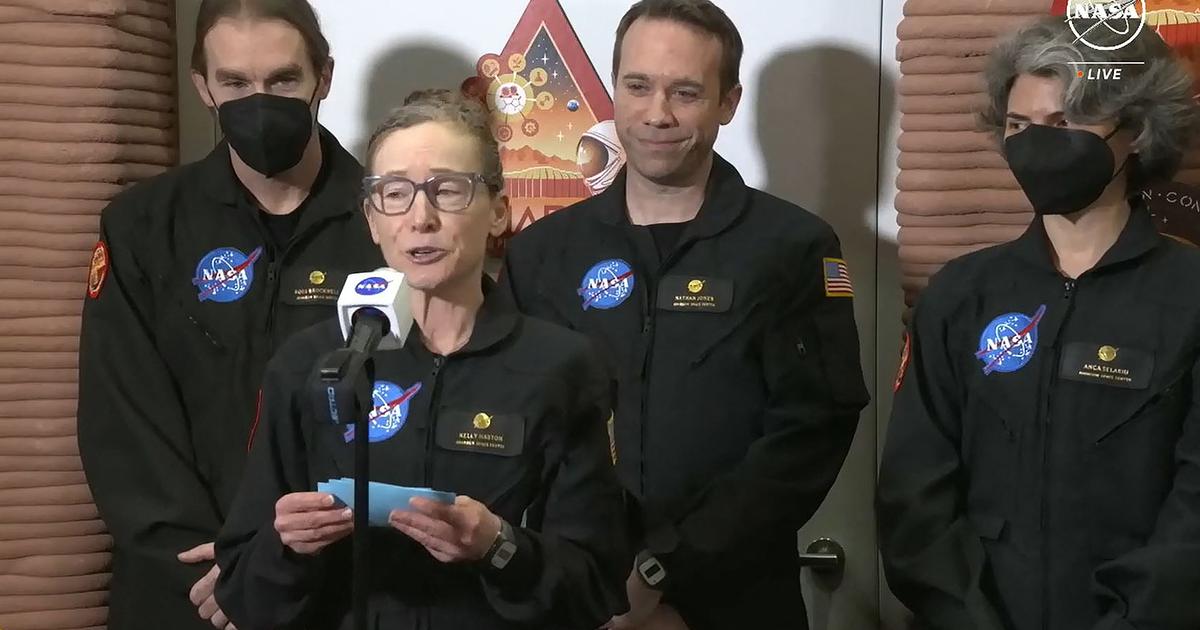
Scientists return after a year in a Martian bunker in Texas
Volunteers will have lived for more than a year. Mars Dune Alphaa 160-square-meter structure built with 3D printers that contains bedrooms, a gym, common areas, and even a vertical farm to grow their own food.
Four scientists completed a 378-day mission in Martian conditions for NASA in Houston, USA, on Saturday, to better prepare for a possible human settlement on the Red Planet. An astronaut from the US agency knocks three times on a seemingly ordinary door. “Ready to go out?”“He asks cheerfully. The response from inside is inaudible. Under his mask, he seems to be smiling as he opens the door in a flash. Four scientists emerge amid cheers.
Anka Celario, Ross Brockwell, Nathan Jones and team leader Kelly Haston were held in prison for 378 days. “Home of Mars” In Houston, Texas, as part of a NASA study. All the while, they were growing vegetables, walking on red sand, and working underground. “Additional pressures” Including isolation, confinement, and slow communication with “Land” And their families.
The four researchers, somewhat disheveled, returned outside with undisguised amusement. “Good morning. Actually, it's very nice to be able to say hello.”“I'm a biologist by trade,” smiles Kelly Haston. “I hope I don't cry here in front of you.”“Wishful thinking,” says Nathan Jones, an emergency physician, as he grabs the microphone. “He cried moments later when he saw his wife in the crowd who had come to congratulate his team.”
Nathan Jones and his companions would have lived for more than a year. Mars Dune AlphaIt is a 160-square-meter structure built with 3D printers and contains bedrooms, a gym, common areas and even a vertical farm to grow their own food. In another area, separated from the habitat by an airlock and covered in red sand, the scientists carried out their mission. “Martian steps”.
The team completed its entire mission. “Conducting critical scientific research, primarily on nutrition, and determining its effects on their performance (…) as we prepare to send men to the red planet.”Steve Koerner, deputy director of NASA's Johnson Space Center, explained. “I am very grateful to you”“This was the first of three missions for the NASA-led Analog Project to explore crew health and performance,” he added.
Another Mars simulation mission was already underway in 2015-2016 in a habitat in Hawaii, lasting one year, but despite NASA’s involvement, it was not in control. As part of the Artemis program, Washington plans to return humans to the moon to better understand how to live far from Earth in the long term, thus preparing for a trip to Mars that could take place in the late 2030s.
” data-script=”https://static.lefigaro.fr/widget-video/short-ttl/video/index.js” >

“Incurable web evangelist. Hipster-friendly gamer. Award-winning entrepreneur. Falls down a lot.”
